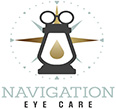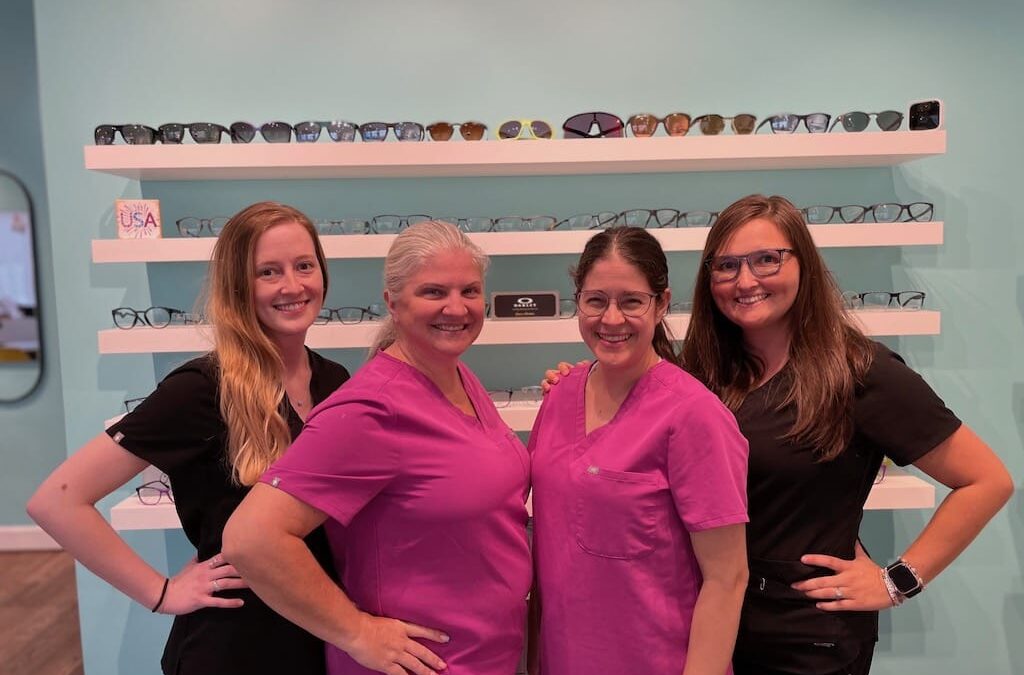Navigating Nearsightedness: Understanding and Managing Myopia in Children
Myopia, commonly known as nearsightedness, is a vision problem that affects millions of children worldwide. While the prevalence of myopia continues to rise, it is crucial for parents to understand this condition and its management. In this article, we will explore the world of myopia in children, its causes, and the role of Optometrist Chesapeake VA at Navigation Eye Care, in managing this vision issue.
The Myopia Epidemic: A Closer Look
Myopia is a condition where distant objects appear blurry, while close objects can be seen clearly. It occurs when the eyeball is too long or the cornea is too curved, causing light to focus in front of the retina instead of directly on it. Myopia can develop at any age, but it usually emerges in childhood and progresses into adolescence. If left unmanaged, severe myopia can lead to vision-threatening complications such as retinal detachment and glaucoma.
Causes of Myopia in Children
Understanding the causes of myopia is the first step in managing it effectively. Several factors contribute to the development of myopia in children. Genetics play a significant role, and if one or both parents are nearsighted, the child is at a higher risk. Additionally, the environment can also influence myopia. Spending more time indoors, less time in natural light, and increased screen time are associated with a higher likelihood of developing myopia.
The Vital Role of an Optometrist
Optometrist Chesapeake VA at Navigation Eye Care, plays a crucial role in managing myopia in her pediatric patients. Regular eye exams are essential for early detection and intervention. Navigation Eye Care’s Pediatric Optometrist can prescribe corrective lenses, like glasses or contact lenses, to help children see clearly. Moreover, they can provide guidance on lifestyle changes and recommend specialized myopia control treatments.
Myopia Control Strategies
To manage myopia and slow its progression, optometrists may recommend various strategies:
- Orthokeratology: This involves wearing specialized contact lenses overnight to reshape the cornea. It provides clear vision during the day without the need for glasses or lenses.
- Atropine Eye Drops: Low-dose atropine eye drops can help reduce myopia progression by relaxing the eye’s focusing mechanism.
- Multifocal Contact Lenses: These lenses can help slow down myopia progression by reducing the strain on the eye’s focusing muscles.
- Outdoor Time: Optometrists may advise children to spend more time outdoors, as natural light exposure has been linked to a decreased risk of myopia.
Parental Involvement and Support
Parents also play a significant role in managing their child’s myopia. Encouraging outdoor activities, limiting screen time, and ensuring that children follow their optometrist’s recommendations are vital. It’s important to communicate openly with Optometrist Chesapeake VA and her team at Navigation Eye Care, to ensure the best possible outcome for your child’s vision.
The Future of Myopia Management
As the prevalence of myopia continues to rise, researchers are continuously exploring innovative treatments and strategies. Pediatric Optometrists stay updated with the latest advancements to provide the best care for their young patients. Regular check-ups at Navigation Eye Care can ensure your child’s vision is monitored and managed effectively.
Myopia in children is a prevalent condition that requires early intervention and management. Optometrist Chesapeake VA and her team at Navigation Eye Care, are equipped to provide the necessary care and guidance. By understanding the causes and taking proactive measures, parents can help their children navigate the world of myopia, ensuring a clearer and brighter future for their eyes.
Eyes on the Prize: Vision Therapy’s Impact on Childhood Learning
In the journey of childhood development, vision is a powerful tool that shapes the way we explore the world and learn. Yet, many children struggle with undiagnosed vision issues that can profoundly affect their ability to grasp knowledge. In this article, we explore the world of vision therapy and the vital role Optometrist Chesapeake VA at Navigation Eye Care plays in helping children overcome learning challenges.
The Power of Sight in Learning
Vision is a remarkable sense, essential for absorbing and processing information effectively. It is through our eyes that we perceive the world around us. But what happens when a child’s vision is compromised? This is where the significance of vision therapy becomes evident.
The Link Between Vision and Learning
Clear vision is not solely about reading letters on an eye chart; it is about the visual skills required for learning. When a child struggles with eye coordination, tracking, or focusing, it can lead to difficulties in reading, comprehension, and overall academic performance. This is where the expertise of the team of vision therapists at Navigation Eye Care, is invaluable.
The Role of Navigation Eye Care in Vision Therapy
Optometrist Chesapeake VA is well-versed in identifying and addressing vision-related learning challenges. She starts by conducting comprehensive eye exams, assessing not just visual acuity but also focusing abilities, eye tracking, and coordination. Once any issues are identified, a tailored vision therapy plan is created.
Understanding Vision Therapy
Vision therapy is a non-invasive, evidence-based treatment that helps children develop and enhance their visual abilities. This therapy involves a series of exercises and activities that target specific visual skills, such as convergence (the ability to bring both eyes together to focus on a near object), tracking (the smooth movement of the eyes across a page), and accommodation (the eye’s ability to change focus from near to far).
Who Benefits from Vision Therapy?
Vision therapy is not limited to children with diagnosed vision problems; it can be a beneficial tool for enhancing the learning experience for all children. Whether a child is struggling with reading, writing, or concentrating, vision therapy can be a game-changer. Even for those without obvious visual issues, it can fine-tune their visual skills and lead to more efficient learning.
The Impact on Childhood Learning
Vision therapy is not just about addressing immediate problems; it is about nurturing a child’s overall learning potential. When children can see clearly and process visual information effectively, it opens the door to improved reading comprehension, enhanced focus, and increased academic confidence.
The Future of Learning with Vision Therapy
As our understanding of the intricate relationship between vision and learning deepens, vision therapy continues to evolve. Navigation Eye Care is at the forefront of these advancements, utilizing state-of-the-art techniques and technologies to empower children in their educational pursuits.
In conclusion, the impact of vision therapy on childhood learning cannot be overstated. It’s a powerful tool for enhancing a child’s visual skills, helping them overcome learning challenges, and boosting their academic success. With the guidance of a skilled Optometrist Chesapeake VA and her team at Navigation Eye Care, parents can ensure that their children’s eyes are indeed on the prize of a brighter and more promising educational future.

